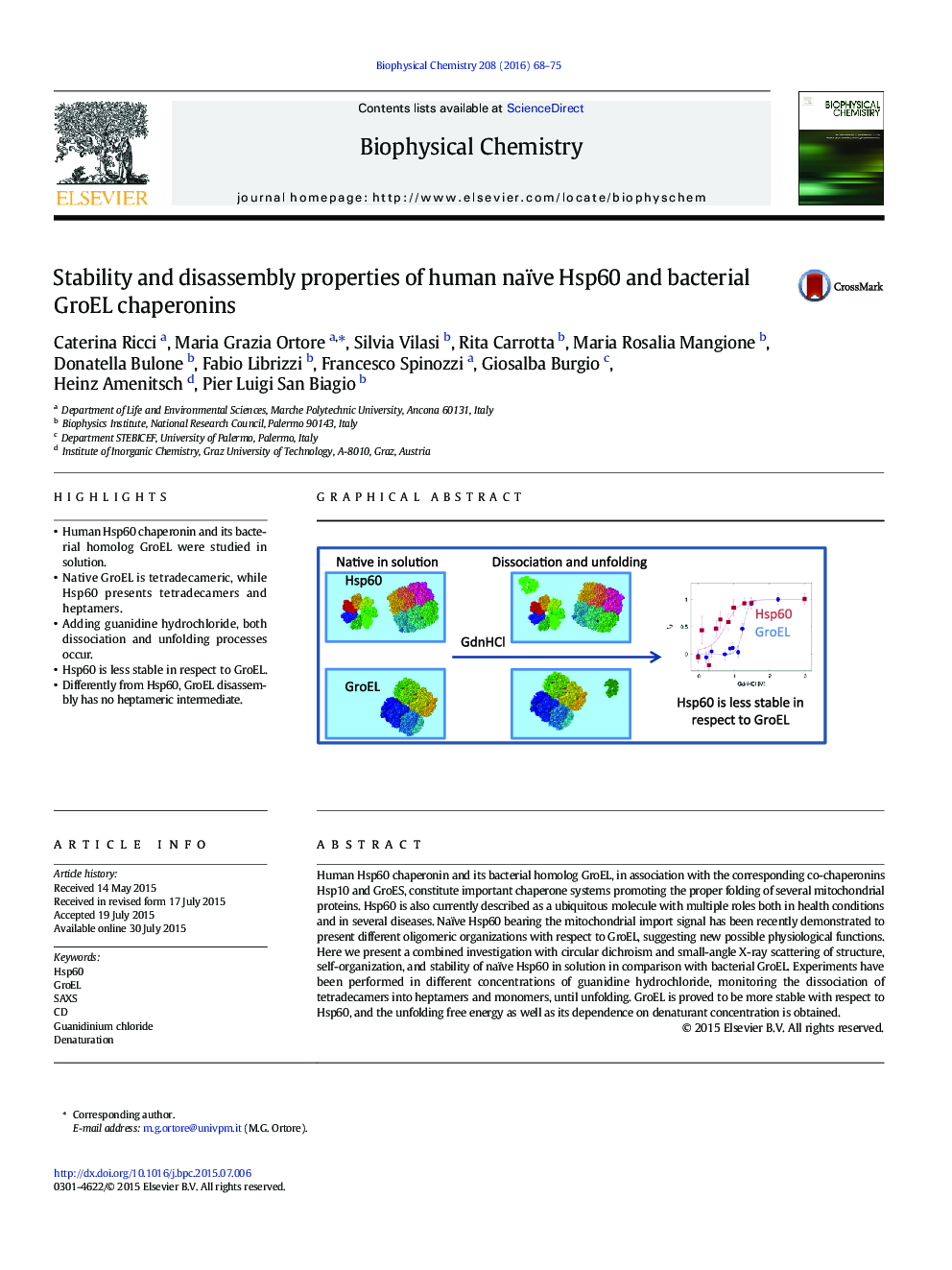| کد مقاله | کد نشریه | سال انتشار | مقاله انگلیسی | نسخه تمام متن |
|---|---|---|---|---|
| 5370851 | 1503911 | 2016 | 8 صفحه PDF | دانلود رایگان |

- Human Hsp60 chaperonin and its bacterial homolog GroEL were studied in solution.
- Native GroEL is tetradecameric, while Hsp60 presents tetradecamers and heptamers.
- Adding guanidine hydrochloride, both dissociation and unfolding processes occur.
- Hsp60 is less stable in respect to GroEL.
- Differently from Hsp60, GroEL disassembly has no heptameric intermediate.
Human Hsp60 chaperonin and its bacterial homolog GroEL, in association with the corresponding co-chaperonins Hsp10 and GroES, constitute important chaperone systems promoting the proper folding of several mitochondrial proteins. Hsp60 is also currently described as a ubiquitous molecule with multiple roles both in health conditions and in several diseases. Naïve Hsp60 bearing the mitochondrial import signal has been recently demonstrated to present different oligomeric organizations with respect to GroEL, suggesting new possible physiological functions. Here we present a combined investigation with circular dichroism and small-angle X-ray scattering of structure, self-organization, and stability of naïve Hsp60 in solution in comparison with bacterial GroEL. Experiments have been performed in different concentrations of guanidine hydrochloride, monitoring the dissociation of tetradecamers into heptamers and monomers, until unfolding. GroEL is proved to be more stable with respect to Hsp60, and the unfolding free energy as well as its dependence on denaturant concentration is obtained.
Journal: Biophysical Chemistry - Volume 208, January 2016, Pages 68-75